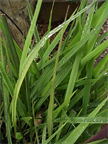 California satintail is a species of grass known by the scientific name Imperata brevifolia. It is native to the southwestern United States from California to Texas and northern Mexico, where it grows in arid regions where water is available.
California satintail is a species of grass known by the scientific name Imperata brevifolia. It is native to the southwestern United States from California to Texas and northern Mexico, where it grows in arid regions where water is available.
A perennial grass growing from a hard rhizome to heights near 1.5 meters, California satintail consists of flat leaves that are up to 20 inches long and three-fifths of an inch wide. The inflorescence is a narrow, cylindrical white plume up to 4 to 12 inches long. It is filled thickly with silky white hairs and dotted with dark speckles which are the orange-brown anthers and purplish-brown stigmas of the spikelets.
It is a monocot, angio sperm and commelinid that falls within the plantae kingdom, the order of poales, the poaceae family, the panicoideae subfamily, the andropogoneae tribe, the imperata genus and I.brevifolia species.
It appears among chaparral, coastal sage scrub, creosote bush scrub, wetland-riparian habitats and is equally likely to occur in wetlands and non wetlands.
This plant can be weedy or invasive, according to authoritative sources. It is considered rare or seriously endangered in California, where it was mistakenly classified as a noxious weed from 1960 to 2004. It is threatened by development and agriculture.
In California, its presence has been noted in Butte, Fresno, Imperial, Inyo, Kern, Lake, Los Angeles, Orange, Riverside, San Bernardino, Tehama, Tulare and Ventura counties, specifically in Calexico, Heber, Blythe, McCoy Wash, Canada Gobernadora, Whitewater, Palm Springs, San Jacinto, Keller Peak, Harrison Mountain, Redlands, Yucaipa, San Bernardino North, Glendora, Azusa, Condor Peak, Matilija, Wheeler Springs, Gosford, Furnace Creek, Panamint Butte, Visalia, Nevares Peak, Craig Canyon, Wahtoke, Reedley, Malaga, Fresno, East of Tin Mountain, Piedra, Clovis, Scotty’s Castle, Clearlake Highlands, Whispering Pines, Paradise West, Campbell Mound and Richardson Springs.
Its scientific name derived from Ferrante Imperato (1550-to-1525), an Italian naturalist.
From Wikipedia, http://www.rareplants.cnps.org, the U.S. Department of Agriculture Natural Resources Conservation Service website page, (https://calscape.org
